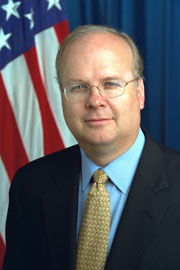Thanks to Bulldog, a new but frequent commenter on Observations, for kick-starting me to look at the topic of Terri Schiavo’s autopsy.
A flurry of activity sprang up upon the release of the autopsy of Terri Schiavo. People on both sides of the issue find ammunition for their case in it. However, for me, the autopsy does not have much impact. It deals with medical issues. The most important issues, in my mind, were issues of Terri’s “husband,” Michael.
I never had a high opinion of Michael Schiavo. I suspected his motives following Terri’s medical crisis, and especially after Michael moved on with his life and started a family with another woman, yet remained Terri’s legal guardian. Something about just didn’t jive.
I could never understand his adamant desire to end her life. There is no independent confirmation of his assertion that Terri would not want to live in the condition she was in. All we have is his word. I don’t think his word alone was enough. Her friends and family didn’t believe she would choose to die. No one will ever know whether she did or not.
I could not understand his refusal to turn Terri over to the care of her family, who pleaded for him to do so, and to the medical professionals who believed they could help her. What harm would there have been if he had walked away from his responsibility as her guardian, since he had already abandoned his responsibility as her husband?
So the autopsy doesn’t have any effect on the way I think about the set of circumstances surrounding the killing of Terri Schiavo. It doesn’t, and can’t, answer the questions I have about Michael Schiavo’s motives, and the tremendous fight he was willing to wage to see that her life was ended.
What the autopsy does is raise even more questions in the mind of lots of people who, like me, see no compelling reason for Michael Schiavo’s insistence on ending her life.
I realize that this piece is lengthy for Observations, but I hope you will read and think about every word.
Here is an excerpt from Phil Brennan of NewsMax.com from Monday, June 20, 2005.
According to the report, Terri's condition was due to the loss of blood to her brain for a period of time sufficient to damage large parts of it but leaves wide open the crucial question of what brought about that circulatory failure in the first place.
Using technical medical terminology, which is lost on most, the 39-page tome announced that the certified manner of death is "undetermined," and the cause of Terri's untimely departure from this earthly life was "Complications of Anoxic Encephalopathy," or, in layman's terms, a brain injury from lack of oxygen.
The report continues to explain that because no one really knows what caused the episode fifteen years ago that resulted in Terri's injury, her manner of death remains uncertain.
The report dismisses bulimia, alleged by her husband and widely reported by the media as the cause, and rules out a heart attack, also named as a cause. It makes no attempt to identify the real cause of the incident, or answer the key question: if neither bulimia nor heart attack were the cause, what did stop Terri Schiavo's brain from receiving its life-giving supply of oxygen?
Instead of clearing up the many questions concerning the life and death of Terri Shiavo, the report on the autopsy of her remains only raises even more questions. Rather than confirming the many dubious claims of her husband, his lawyers and their allies in the media about her real condition and its cause, it strongly suggests that the claims were unsupported by the facts.
Moreover, instead of being conducted free of any possible bias, the medical examiner largely relied on the so-called medical records supplied by one of Michael Schiavo's lawyers.
According to the authoritative The Empire Journal, the major source of inside information about Schiavo case, the medical examiner, Pinellas-Pasco medical examiner (ME) Jon Thogmartin said he based some of his autopsy findings on medical reports and records provided by Gary Fox.
Fox was one of two medical malpractice attorneys for Michael Schiavo.
In fact, Thogmartin specifically stated that he could not have completed the autopsy without those records and said that the case would have to remain open because many records of the case, now unexplainably missing, might someday become available.
Wrote Thogmartin: "It is the policy of this office that no case is ever closed and that all determinations are to be reconsidered upon receipt of credible new information, In addition to fading memories, the 15-year survival of Mrs. Schiavo after her collapse resulted in the creation of a voluminous number of documents many of which were lost or discarded over the years. Receipt of additional information that clarifies outstanding issues may of shall cause an amendment of her cause and manner of death."
He adds: "What was the cause and manner of death? Mrs. Schiavo suffered a severe anoxic brain injury. The cause of which cannot be determined with reasonable medical certainty. The manner of death will therefore be certified as undetermined."
In that statement Thogmartin appears to agree with Michael Schiavo's assertion that his wife "had died fifteen years earlier."
Yet if that Terri actually died during her 1991 "accident" and that she was being "artificially kept alive" in spite of the fact that her body was "shutting down," why did Dr. Thogmartin state that Terri was "a relatively health woman who could have easily survived another 10 or 15 years."
Clearly, Mr. Brennan thinks there are sufficient irregularities in the autopsy process. I take no position on the implications of his comments.
For those who do not believe NewsMax, perhaps the views of a qualified physician will have more validity. Dr. William Hammesfahr, who was nominated for the Nobel Prize in Medicine and Physiology in 1999, has read the Schiavo autopsy. In 2000, Dr. Hammesfahr’s work resulted in approval for the first patent in history granted for the treatment of neurological diseases including coma, stroke, brain injury, cerebral palsy, hypoxic injuries and other neurovascular disorders with medications that restore blood flow to the brain. His work was used successfully treat disabilities including ADD, ADHD, dyslexia, Tourette's and autism as well as behaviorally and emotionally disturbed children, seizures and severe migraines. He has sufficient credentials to comment on the autopsy’s findings. Following is his statement:
We have seen a lot on the autopsy of Terri Schindler Schiavo in recent days, that I feel needs to be addressed. To ignore these comments will allow future 'Terri Schiavo's' to die needlessly after the wishes of clinicians and family are ignored.
Considering that there were so many physicians and therapists who were willing to step forward to treat Terri Schiavo, from university based practitioners to those in private practice, it clearly shows that the mainstream medical community across the board, those involved in treating patients, knew that they could help Terri.
The record must be set straight. As we noted in the press, there was no heart attack, or evident reason for this to have happened (and certainly not of Terri's making).
Unlike the constant drumbeat from the husband, his attorneys, and his doctors, the brain tissue was not dissolved, with a head of just spinal fluid. In fact, large areas were "relatively preserved."
The purpose of the therapies offered by so many, from major universities, brain injury centers, and from private practice physicians, is to improve and restore quality of life, and function, which the mainstream medical community clearly tried to get to her.
I have had a chance to look at Dr. Nelson's analysis of the brain tissue, and essentially, as a clinician, these are my thoughts.
The autopsy results confirmed my opinion and Dr. Maxfield's opinions that the frontal areas of the brain, the areas that deal with awareness and cognition were relatively intact. To use Dr. Nelson's words, "relatively preserved." In fact, the relay areas from the frontal and front temporal regions of the brain, to the spinal cord and the brain stem, by way of the basal ganglia, were preserved, thus the evident responses which she was able to express to her family and to the clinicians seeing her or viewing her videotape. The Spect scan confirmed these areas were functional and not scar tissue, and that was apparently also confirmed on Dr. Nelson's review of the slides. Dr. Maxfield's estimates of retained brain weight were apparently accurate, although there may have been some loss of brain weight due to the last two weeks of dehydration.
Dr. Maxfield and myself both emphasized that she was a woman trapped in her body, similar to a child with cerebral palsy, and that was borne out by the autopsy, showing greater injury in the motor and visual centers of the brain. Obviously, the pathologists comments that she could not see were not borne out by reality, and thus his assessment must represent sampling error. The videotapes clearly showed her seeing, and even Dr. Cranford, for the husband, commented to her that, when she could see the balloon, she could follow it with her eyes as per his request.
That she could not swallow was obviously not borne out by the reality that she was swallowing her saliva, about 1.5 liters per day of liquid, and the clinical swallowing tests done by Dr. Young and Dr. Carpenter. Thus, there appears to be some limitations to the clinical accuracy of an autopsy in evaluating function.
With respect to the issue of trauma, that certainly does not appear to be answered adequately. Some of the types of trauma that are suspected were not adequately evaluated in this assessment. Interestingly, both myself and at least one neurologist for the husband testified to the presence of neck injuries. The issue of a forensic evaluation for trauma, is highly specialized. Hence the wish of the family to have observers which was refused by the examiner.
Ultimately, based on the clinical evidence and the autopsy results, an aware woman was killed.
s/Dr. W. Hammesfahr
Dr. Hammesfahr’s statement tends to support my belief that Terri Schiavo was somewhat aware, and was not a brain-dead vegetable. She did not deserve to die. She deserved protection from her guardian and from the Florida legal system and from the legal system of the United States. Both her legal guardian and the legal system failed her. It is a pitiful commentary on the low value our society places on human life.






